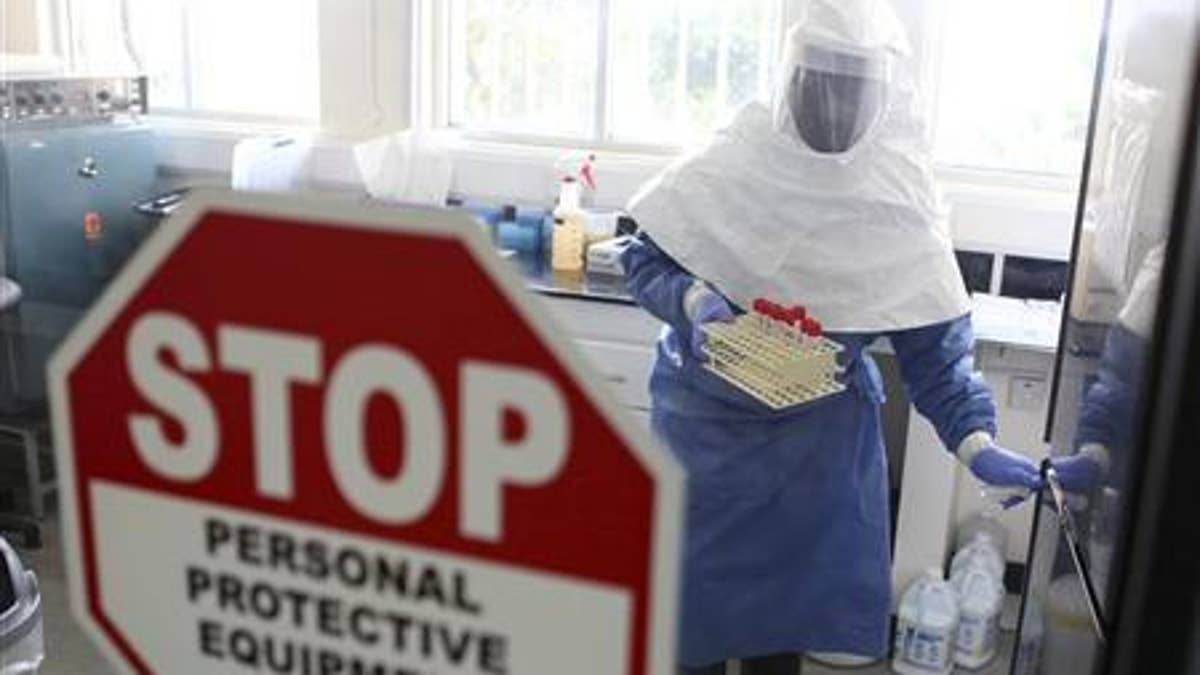
A doctor works in a laboratory on collected samples of the Ebola virus at the Centre for Disease Control in Entebbe, about 37 km (23 miles) southwest of Uganda's capital Kampala, August 2, 2012. REUTERS/Edward Echwalu
Nearly 100 children in the United States were suspected of having Ebola last year, and although none of them actually had the deadly disease, these kids sometimes experienced delays in care because medical staff were concerned about being exposed to Ebola, according to a new report.
Although it's true that health care professionals are at increased risk for Ebola when they care for patients with the disease, there should be a way for them to provide the proper care for patients suspected of having Ebola while still being aware of the risks, the researchers said.
"Public health and health care providers in the United States, while maintaining a high level of vigilance for Ebola among ill pediatric patients, should be prepared to provide child-focused care that includes timely diagnosis and treatment of common pediatric illnesses," the report said.
For the report, researchers at the Centers for Disease Control and Prevention reviewed cases in which U.S. health care providers contacted the agency because they thought a child had Ebola.
Between July 2014 and January 2015, the CDC received calls regarding 89 children who were suspected of having the disease. About half of these calls occurred in October 2014 — the month after the first Ebola diagnosis in the United States.
But about two-thirds of the children who were suspected of having Ebola had never been to an Ebola-affected country, and thus were not considered to be at risk for the disease. In most of these false alarms, the health care provider who reported the case was confused about where the Ebola outbreak was occurring, the report said. And in 15 cases, the health care provider erroneously thought the child could have contracted Ebola in the United States, even though the child had not had contact with any of the handful of people who had Ebola in the United States last year.
Still, there were 33 children who had traveled to an Ebola-affected country, typically Guinea, Liberia or Sierra Leone. And of these children, 32 also had symptoms that might occur with Ebola, such as fever and vomiting.
Fifteen children were tested for Ebola, but none had the disease. The children who had traveled to Ebola-affected countries were often diagnosed with other illnesses, such as malaria or the flu.
During their evaluation for Ebola, 15 children were placed in isolation, and 10 were transferred to another hospital. At least five children experienced a delay in their treatment, either because it was difficult to find a hospital that could evaluate an Ebola patient, or because hospitals were reluctant to test the patient due to concerns that their labs could become contaminated with Ebola or their staff would be exposed to the disease, the report said. [Why Are We So Afraid of Ebola?]
"Routine pediatric care for common pediatric illnesses ... was sometimes delayed because of concerns about Ebola," the report said. Given that these children had not had contact with an Ebola patient, and that no child in the United States has even been diagnosed with Ebola, "children can be expected to have other more common causes of [fevers], and delaying evaluation and treatment of these other diagnoses might lead to poorer clinical outcomes," the report said.
The CDC also noted that many of the calls the agency received were regarding children who were not considered to be at risk for Ebola. Steps such as educating doctors and reaching out to the community to explain the risks of Ebola "might reduce public misperception about Ebola risk and lessen strain on clinical and public health resources," the report said.
The report is published in the Sept. 18 issue of the CDC journal Morbidity and Mortality Weekly Report.
- 5 Viruses That Are Scarier Than Ebola
- 10 Deadly Diseases That Hopped Across Species
- 7 Devastating Infectious Diseases
Copyright 2015 LiveScience, a Purch company. All rights reserved. This material may not be published, broadcast, rewritten or redistributed.
